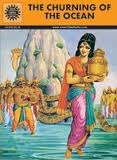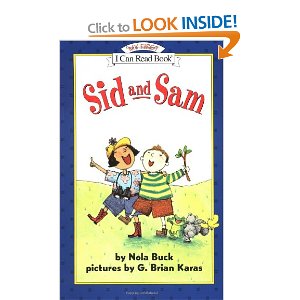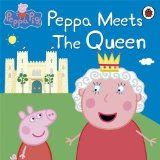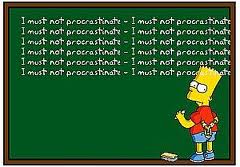It is that time of the year again.
Bologna is over. London Book Fair is close enough to smell. In a couple of weeks, editors, agents and publishers will be back to their day jobs and perhaps will find some spare time to check their submissions in-box or the slush-pile as they lovingly call it.
Having placed a picture book on my own, I feel the pang of not having an agent. I know if there is someone to fight my battles, place my work on the right tables, I will be able to get some of my current submissions into acceptances.
Getting close to personal rejections from editors from reputed publishing houses, I always wonder – what if I had placed this story with the right editor at the right time. How can I find an agent who can help me get noticed?
So this spring Saturday, with loads of other things to do, I embark on finding out if there is an agent out there who accepts children’s writing. If they do, do they accept picture books.
Having done the research and decided who to send my materials to, I thought I’d share this with the rest of the world. There are so many of us out there, struggling to do the writing, editing , revising, placing and marketing all on our own. Perhaps it would help others save some time.
So fellow children’s authors, here are my findings. Feel free to share your own findings, tips and cautions in the comments.
Who is accepting children’s book manuscripts?
Milestott Children’s Literary Agency http://www.s291999326.websitehome.co.uk/subs.html
Darley Anderson - http://www.darleyandersonchildrens.com/submissions.html
Felicity Bryan – 8+ only - http://www.felicitybryan.com/Submissions.html
Stephanie Thwaites at Curtis Brown – 8+ only - http://www.curtisbrown.co.uk/stephanie-thwaites/
Eddision Pearson - http://www.eddisonpearson.com/submissions.html - closed until May 2012.
AM Heath – (Sarah Molloy) - No picture books. http://www.amheath.com/submissions.php
Pollinger Limited - http://www.pollingerltd.com/submissions/index.htm
RWC – Pat White and Claire Wilson - http://www.rcwlitagency.com/submissions.aspx
and Sam Copeland (11+ only)
Caroline Sheldon’s Literary Agency - http://www.carolinesheldon.co.uk/client.php
Eve White - http://www.evewhite.co.uk/new/submissions.html - at this time 7+ only
 I try and write 20 minutes a day every day. I also keep a weekly quota of 3.5 hours of writing. Mind you, I am not a full-time writer. I don’t have an agent and I am not being commissioned every week for something or the other.
I try and write 20 minutes a day every day. I also keep a weekly quota of 3.5 hours of writing. Mind you, I am not a full-time writer. I don’t have an agent and I am not being commissioned every week for something or the other.
Everything I write is new and creative. I work and rework the picture books I have created. I edit, revise, re-write. I paginate, I do dummies, I re-write.
I also have a notebook full of ideas – so I dip into them and every time I write, I unconsciously write in the 32-page book format. Some fit, some don’t fit. I try and fit the ones that don’t fit the first time. And if it works, I continue on it as a picture book. If not, I try and make it a chapter book.
Either way, everything I write is for fun. I do send them out at some point, when my first reader and has seen it and commented. I rewrite over and over again and then submit to my critique group. Then I rewrite again. Sometimes it changes the story, sometimes it just changes the words. Either way, every rewrite is valuable.
One such writing episode was the story of a boy in a village in India. I wanted to call him Ramu. My father is called Ramu at home. I wanted my father to be part of my books, in some way. He has always been proud of whatever I wrote. He had celebrated my victories with prayers to the Almighty and blessings to me.
And then I had this particular publisher in mind. They gave me a brief a year ago on what kind of books interest them.
The final piece of the jigsaw was an idea that has been in my mind for many years now. I have tried to write it many times, with no success.
After a long wait, I have placed a picture book with Indian publisher Pratham Books. Pratham in Sanskrit means “First”. Pratham have been working as a Non-governmental organisation to put a book in every child’s hand. Indian children do not always get the opportunity to learn to read and write. When they do go to school or lucky enough to have parents who can teach them, they cannot afford the books that most 1st world kids take for granted.
While there is no dearth of creativity, there is a certain reluctance to waste time on fiction. It is not always understood that fiction is the channel of growth. When schools and councils are struggling to find money for text-books, there is no argument when it comes to fiction.
I am so proud to be a part of that movement. I will be very happy when many eager children read my story and enjoy it. While I want to be someone like Julia Donaldson and have millions of your young readers buying Gruffalo and equally rewarding is the other spectrum where thousands of kids will read my book and all I get from it is the satisfaction, the knowledge that someone smiled from reading my book.
Pratham Books have been very selective in their content creation and I am very glad that their editorial team loved my book.
I was at the Affordable Art Fair on Thursday night. I was there to buy some interesting art for the new flat. I wanted a special connection to the painting I bought – something about writing, something about telling a story or the whimsy of being a kid. There was so much that talked to me and some were a bit out of reach – even when it might be affordable for others.
Then at one gallery, I flipped through some stacked, unframed paintings. I saw a painting that depicted an unexpected storyteller with a small girl. An Indian setting.
That painting not only made a connection – but inspired something in me. My mind was suddenly cluttering with ideas. As if the painting was done for me – to inspire my next book.
I have been thinking about the painting, the title of the painting and the characters portrayed for the last four days. I started writing something today that took a germ of inspiration from the painting. Not sure it would go somewhere. But it is still twirling in my head and making me think about the characters.
Does art inspire you? Have you written something because a piece of art beckoned to you? Because the artwork kick-started your muse-engine?
Tell me what artists inspire you and why.
I was talking to a friend about Sati. He thought if my spouse dies, I have to jump into the pyre with him. But I gently disappointed him by saying – firstly it was a practice followed by Rajput women to prevent being captured by the enemy and I was from the South of India where that was not a custom.
That’s when I realised how badly researched non-fiction or even fiction for that matter can create wrong imagery, clichés and perhaps inaccurate cultural history. When writing for children, especially stories set in other cultures, it is a huge responsibility to keep the context and the facts correct.
Non-fiction writers do this for a living. But everyone is limited by the volume of material available to them, access to people originating from another culture and perhaps other social settings. I think in that context the social media today can be very helpful. It is perhaps a lot more easier to reach out to people in other cultures via the numerous platforms we have today.
On the flip side, if you get it wrong, perhaps it is very easy to be ousted in public. A simple wrong fact can unravel an entire reading experience. I remember reading a recent novel of a famous British author. I respect him hugely. And then I read one sentence in his story about my culture which was absolutely wrong – it could have been easily fixed by even googling. But no one had caught it. I thought either the copy editor thought it was correct since it was a famous author or no one paid attention because it was not a local fact.
What are your experiences when writing about other cultures? What techniques do you use to keep the facts right? How do you enrich the material with authentic ingredients?
On the twelfth day of Christmas,
my editor gave to me...
12 book deals
11 movie options,
10 book tours,
9 galley proofs,
8 thumbnails,
7 merchandise,
6 book reviews,
5 gold pens,
4 funny tweets,
3 new covers,
2 free books
And an ad in the Bookseller
My alarm goes off at half past five in the morning. After I turn my mobile off, as it reminds me to get up and get going, I see that the cold night had brought emails from Asia.
My publisher and editor from Asiapac Books, Singapore wrote to me say that last week in Singapore, during the Popular BookFest 2011, one of my titles was nominated for the ReadersChoice Awards. Yay! What a great way to start a day.
Then I checked it out on the Internet. It is among the fiction and non-fiction titles for children and although it didn’t win – it is great to be nominated.
The point about books in Singapore and other Asian countries is that families like non-fiction as much as fiction. Text books and books on improvement sell really well in Singapore. So it is not a miracle to see a book like Top Learning Tips to be on the same list as fiction titles. How did I get to do Top Learning Tips?
My editor at Asiapac Books, the unflappable Lydia Lum gave me a challenge. 4 pre-defined characters and a title – you will need to write believable stories about these 4 kids and still teach concepts. One of the very first ones I wrote was “Top Health Tips”, about being healthy for young children. When Top Learning Tips was offered as a commission I jumped at it. Having taught for many years, this was a subject close to my heart. I wrote about lots of different new topics – from preparing for class, listening, to mind-mapping and collaborative learning. We even touched on topics dear to parents’ hearts – preparing ahead for exams, not getting nervous. We also added some local colour by adding Feng Shui tips for decorating a study.
I grab time to write whenever possible. Life gets in the way of long stretches of writing. When life is not in the way, my laziness creeps in, and has a ball. As many of you might know, I work full-time. Sometimes I came so late from work that getting up next morning to write before the day rushes in, is almost impossible. Some mornings, I cook before I get into work. Some mornings are reserved for hanging the washing from three days ago. In a given working week, I might grab twenty minutes one morning to write. Sometimes I switch on my PC to write and then get distracted by emails. Most days therefore I grab time on the train to work. I don’t always take the rush-hour train – mostly because I am too lazy to get on the 8-am train. Especially if only 10 hours ago, I had got down from one of those caterpillar caravans. So most often I get a seat.I have a choice when I get on the train and find a seat. I can read the latest book I am carrying or I can write. It is anyone’s guess what I am going to do. Sometimes I take my notebook out, jot down the start time and then I am stuck. I can’t think of anything to write. Often I remember Natalie Goldberg’s advice and describe the person in front of me or describe what’s hurtling past the window. Some days, I have a topic to write about. Some days, I rewrite something I had written earlier. On my way back home, I am battling fatigue, sometimes alcohol induced coma and just sheer tiredness. But the train ride is a perfect 17 minute journey. Taking away a minute or two for getting organised, I have a 15 minute uninterrupted slot to write. My train keeps me captive in the seat. As long as I have an idea, I attempt to write.Does that mean during weekends I spend every minute, writing? You must be joking. I don’t. I am lucky if I get my hour done before the day begins. In my nightwear, I sit down and write something for an hour or a bit more. If I don’t go anywhere out that weekend, I might manage another 2-3 hours. The rest goes in chores, supermarket, “oh the sun is out” jaunts to the park or to the Southbank. A boring life, but still no writing.
View Next 25 Posts























.jpg)






 0 Comments on Celebrating the Queen's Jubilee as of 6/1/2012 12:53:00 PM
0 Comments on Celebrating the Queen's Jubilee as of 6/1/2012 12:53:00 PM





























I loved comic books as a child and would read anything I could lay my hands on. I still love them now and am delighted that they, and graphic novels, seem to be gaining popularity.
I really enjoyed reading about your experiences Chitra and would love to see some of those comics you describe.